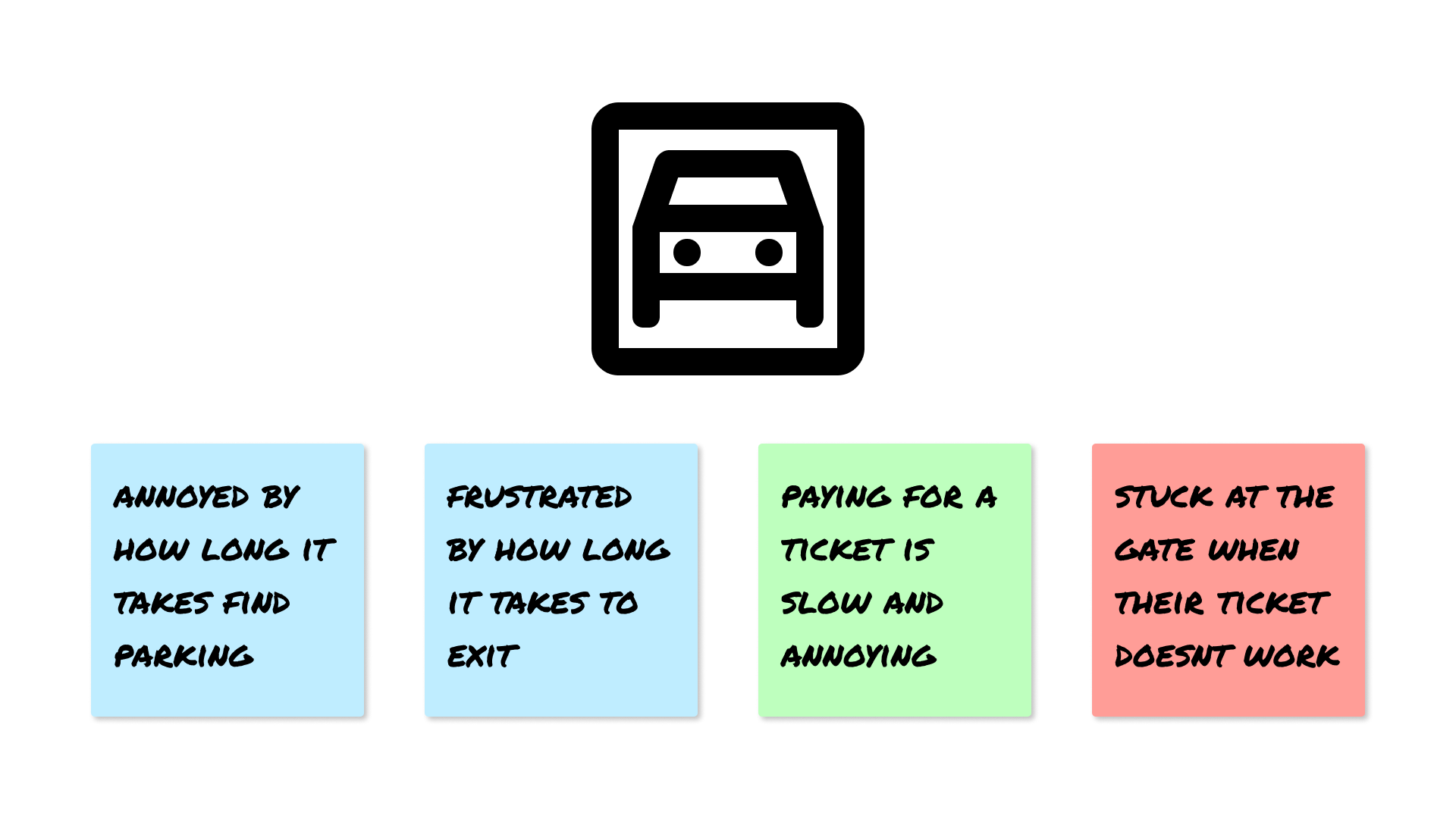Case Study
Parking Problems
Client:
Westfield
Timeline:
1 Week
Tools:
UX Research, Figma, FigJam, Notion
Team:
Independent
Let’s go to the mall!
Unibail-Rodamco-Westfield is the premier global developer and operator of flagship destinations. As they stay relevant by constantly innovating, I searched for ways to improve their mobile app to enhance the shopping center experience. This case study follows how I researched, identified, and addressed pain points in the evolution of an iconic experience.
Why are we here?
In a 1-week design sprint, I overhauled an existing system to expedite entering and exiting the mall. In this case study, you will follow me as I explore the ins and outs of visiting the mall and how I streamlined the many coming and goings.
Research
🔎
Research 🔎
Let’s talk!
4
interviews
17-50
years old
15
questions
I interviewed users that visit the mall at varying frequencies to inquire about their habits and reasonings. From those interviews I distilled their thoughts into main points and sorted them into an affinity map.
What’s trending?
In addition to the interview takeaways, I included reviews on the app store for the current Westfield mobile app.
Visitors are driving and parking at the mall.
Visitors do not enjoy parking garages.
Visitors dislike and avoid when the mall is busy.
After identifying an overarching theme in the frustrations of going to the mall, I was able to define a problem and need that aligned with Westfield’s business goals.
What does Westfield need to do?
Westfield needs to innovate a way to reduce the time that visitors spend in their parking garages to decrease bottlenecks and increase overall satisfaction.
Brainstorming
🧠
Brainstorming 🧠
My Brain Dump
Based on emerging technologies, I ideated ways of incorporating existing systems to either utilize or improve upon them.
A paperless future.
Parking garages now use license plate readers to track cars entering and leaving, however, you are still required to use a ticket to enter and leave. Using license plates as the “tickets” could be the next step in moving towards a paperless system.
There’s an app for that.
Already implemented in certain Westfield locations, the ability to pay from your phone would circumvent lining up at the ticket machine to pay for parking. While this feature is already in use on their app in certain locations, the system utilizing it is currently severely underdeveloped and unreliable, stated users.
Once was lost, but now found.
With license plate readers and mobile payments, the next step in creating a cohesive system would be the ability to recover lost tickets. Whether it is physical or digital, by being able to search your ticket by your license plate, visitors will have one less thing to worry about.
How do I get out?
With a strong idea of the parking system I wanted to design, I outlined a user flow with flexibility and efficiency in mind.
Wireframes
Understanding the different decisions and screens the users would need to interact with, I began to outline the 6 keyframes that users would interact with.
Papers, please.
Before paying for a ticket, the first two screens would be how a user is able to retrieve their digital ticket. From the third screen, users are then able to view the details and status of their ticket before navigating to pay.
Familiar and fast.
Users then follow a familiar checkout procedure consistent with other mobile payment screens. After validating their ticket, users are prompted with simply visual and written instructions on how to leave without using a physical ticket.
Implementations
📱
Implementations 📱
View the full prototype.
Skip the line.
To reduce a major bottleneck leaving the parking garage, users can quickly scan their tickets from their phones and pay from the palm of their hand. This allows users to spend less time waiting in line to pay and subsequently reduces exit time.
No ticket? No problem.
Using license plate readers already found in parking garages, users can look up their license plates to find their tickets. This alternative method allows users to save time and worry when losing their paper tickets.
What if we made it faster?
No one enjoys typing in their credit card information and not everyone uses digital wallets, users are given the ability to save their car and payment information for future visits. This option is the most streamlined and requires no typing facilitating a swift and effortless interaction.
Get out!
With car license plates and statuses constantly being tracked and updated, users that paid beforehand can simply drive out of the garage without ever rolling down their windows. This will alleviate another major bottleneck when leaving parking garages— reducing stall times and discomfort at the toll gate.
Iterations
🔁
Iterations 🔁
Do you accept Apple Pay?
A trending request in the current Westfield app was the ability to use wallet apps. Instead of relying on a single way to save payment method, incorporating established methods provides users with another level of convenience and way to save time.
Can I get a receipt?
Reinforcing validations and proof-of-purchase, users are given an “updated” ticket that acts as a receipt. This receipt can be used at the gate to bypass the license plate reader in the event of a reader malfunction
Come back soon.
If you are downloading an app to pay for parking, you probably plan on using it again. Users can skip the hassle of putting in all of their information again by saving after the first time.
Moving Forward
⏩
Moving Forward ⏩
Planning a visit?
Users reported disliking and actively avoiding the mall during peak business hours. As the shopping experience has evolved to be both in-person and online, preconceived notions of when the mall is busy are now outdated. Creating a way to check how busy and full the parking garages are in real-time provides users with more realistic expectations of their next visit.



















